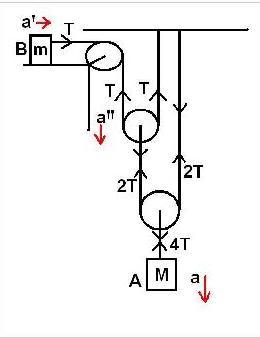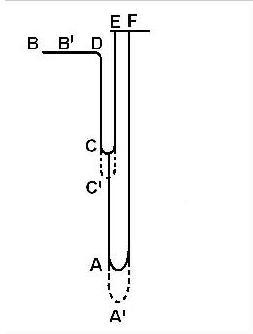thnx........now how do i go about forming a constraint equation?
16 Answers
in a lot of situations, there are some ways in which the whole set up is "constrained" like say in a solid, all the points are relatively at rest to each other.
This example is out of the blue.. cos this is not something that u will ever have encountered as a constraint relation...
Basically it is like if u tie two stones with a rope, their motion will be "constrained" to the fact that the max distance between them is the length of the rope...
If the rope is replaced by a rigid rod, it will give a constraint that the distance between them is fixed and equal to the length of the rod!
I think this should be a good start :)
There are 2 things about this one..
one the conventional lengths.. etc..
the other is work done by internal energy.
The second method is very easy but not many people know about it.. (atleast when i was preparing!)
i think explaining it here might not be very easy... i will try to find some text fro u to refer ..
For work done by internal energy.... I think Nishant bhaiya meant..
For ex for the question...
One method is: by noticing that length is constant.
_______________________________________________
Or....
just think of other method!!!!!!
Hint:
Work done by internal forces (in a system) is zero.
What are the internal forces in this pulley system?
Think of the work as (force multiplied by displacement)
acc to dat energy method,,,,
T.X' + (T-2T).X" + 4T.X =0 [see fig, x' corresponds to a' and so on...]
so differentiating,
T.v' -T.v" + 4T.v =0
agn differentiating,
T.a' -T.a" + 4T.a =0
so relation between the acelearations... a'-a"+4a =0
correct me...(pakka wrong hai...)
arey uparwala toh pakka wrong hai.... i think it will be,...
T.X' -2T.X" + 4T.X =0 [see fig, x' corresponds to a' and so on...]
so differentiating,
T.v' -2T.v" + 4T.v =0
agn differentiating,
T.a' -2T.a" + 4T.a =0
so relation between the acelearations... a'-2a"+4a =0
Pulley is massless so a" ?
also if work done on it 2Ta" should be (2T-2T)a"
previous both posts of mine are wrong....
its going to be.. 4Ta - Ta' = 0.
in more simple language...
in a two block system,the ratio of their accelerations is in inverse ratio of the tensions acting on them.